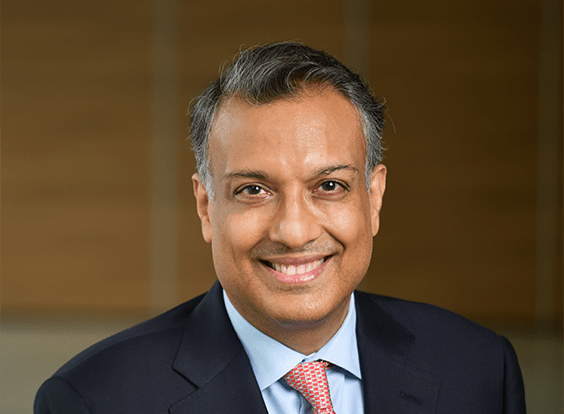Twelve-year-old ReNew Power has been rebranded ReNew, signalling a shift from being a pure-play independent power producer to an end-to-end provider of solutions across the decarbonisation platform. In an interview with Geetilm Srivastava, chairman and CEO Suniant Sinha spolee about what the neiu identity signifies and what lies ahead for the company as well as the sector. Edited excerpts:
Whats the goal behind the rebranding exercise?
The word ‘power’ in our erstwhile name means electricity. We were an electricity firm for quite some time because we were putting up wind and solar farms, generating electricity and selling it to the grid. Now our focus is not just on power, which forms about a quarter of total energy consumption, but on other forms of energy as well. We are now transitioning into a new phase of growth – building on our excellent RE, execution and digital capabilities.
In our new avatar, we will play a key role in supporting this transition with customisable solutions for the varied sectors in addition to our core business of utility scale solar, wind and hybrid projects. The goal behind the new identity is to reflect on our current vision and current vision and evolve as we branch out into fields such as green hydrogen, green ammonia, carbon markets and energy storage in addition to our current offerings. We aim to provide a wider canvas of clean energy which does not limit itself to our traditional electricity needs.
The energy transition journey of corporations requires bespoke solutions, provided by reliable and trusted players globally, which increasingly makes us the decarbonisation partner of choice. Meanwhile, the word ‘ReNew’ continues to reflect the fact that whatever we do is clean and green.
What can we expect from the firm in the next five years, and how much is ReNew planning to invest in the new areas it is venturing into?
We have approximately 13.4 GW of commissioned and pipeline utility scale projects already. We are looking to add 5 GWs of capacity in the commercial and industrial (C&I) sector and that could be one way to estimate expected investment levels. We have ambitions to grow our presence in green hydrogen significantly. These facts and numbers represent a small fraction of our ambition. Our aim is to be prudent with our investments even as we expand into these new areas as we continue to grow our core business areas.
The company is also looking to add capabilities across multiple offerings. We would be relying more on our in-house talent both in domestic and overseas markets. However, there are some capabilities such as the manufacturing of electrolysers et al, for which we would rely more on tie-ups with the leading firms in the sector.
How do you feel ReNew can contribute to the government’s net-zero carbon goal and what is your assessment of the country’s renewable sector’s future?
What we’re able to do for companies, we can do for the government as well. In helping companies, we’re also helping the country as a whole. It is very important for the renewable sector to do extremely well because otherwise we cannot meet our carbon emission reduction targets. It is critical for renewable energy sector to scale massively, by many folds, every year. Over $ 1 trillion is being invested in the renewable sector globally. That number has to grow up to $ 3trillion-$4 trillion. The same thing has to happen in India. The $10billion-$15 billion being currently invested needs to be scaled up 4-5 times. That’s the need of the hour, there’s no choice.
In the solar and wind power sector, how will the company scale its production and cover the gap with leaders such as Adani Green?
ReNew is one of the dominant players in the utility offerings as well as the C&I market in India, having tied up with leading corporates – with over 13GW of clean energy assets and more growth ahead we possess 120 operational utility-scale wind, solar and hydro energy projects spread across nine Indian states.
There is enough demand in this country for renewable energy with the prime minister having announced an ambitious goal of 500 GW of installed capacity by 2030. There is enough room to grow for everyone. The important thing is how prudently one deploys capital and how efficiently one executes the projects.
What are your plans on the ESG front?
We have our ‘Lighting Lives’ programme, which focuses on last-mile electrification of schools with less than 3 hours of electricity through solar energy. Another project run by us is ‘Gifting Warmth’, through which we have gifted over 10 lakh blankets by now. We also have ‘Project Surya’, in which we train low-income women salt pan workers to work in the renewable industry. The whole purpose of our ESG programmes is to make the energy transition just as inclusive as possible.



